NCERT Solutions Class 6 Maths Chapter 2 Whole Numbers Exercise 2.2 are provided here. These solutions are prepared by expert teachers to guide you in your exam preparation. The solutions are always prepared by following NCERT guidelines, so that it covers the whole syllabus accordingly. Our CBSE Class 6 Maths Solutions Chapter 2 Exercise 2.2 Solutions are very helpful in scoring well in examinations.
NCERT Solutions for Class 6 Maths Chapter 2 Whole Numbers Exercise 2.2
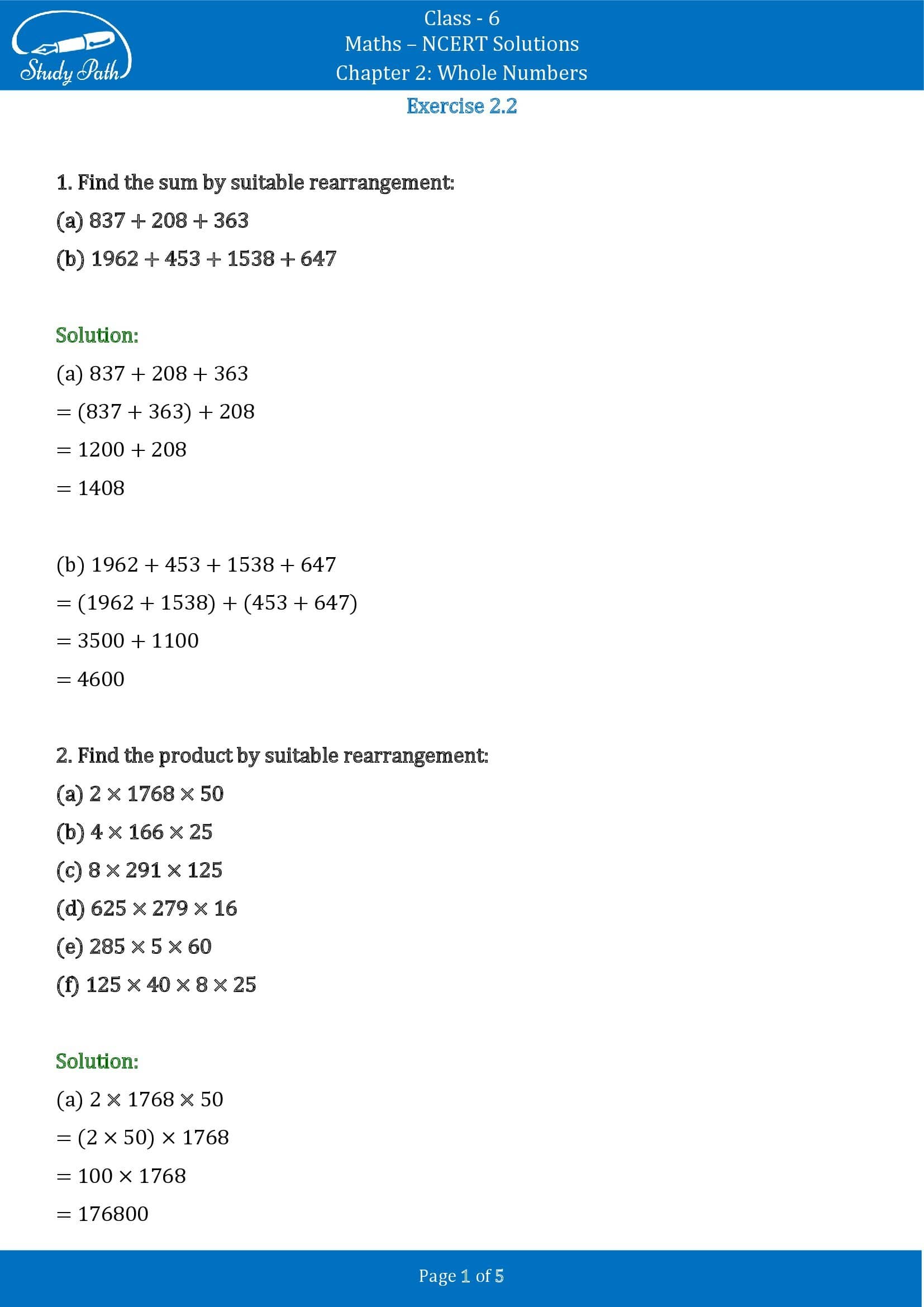
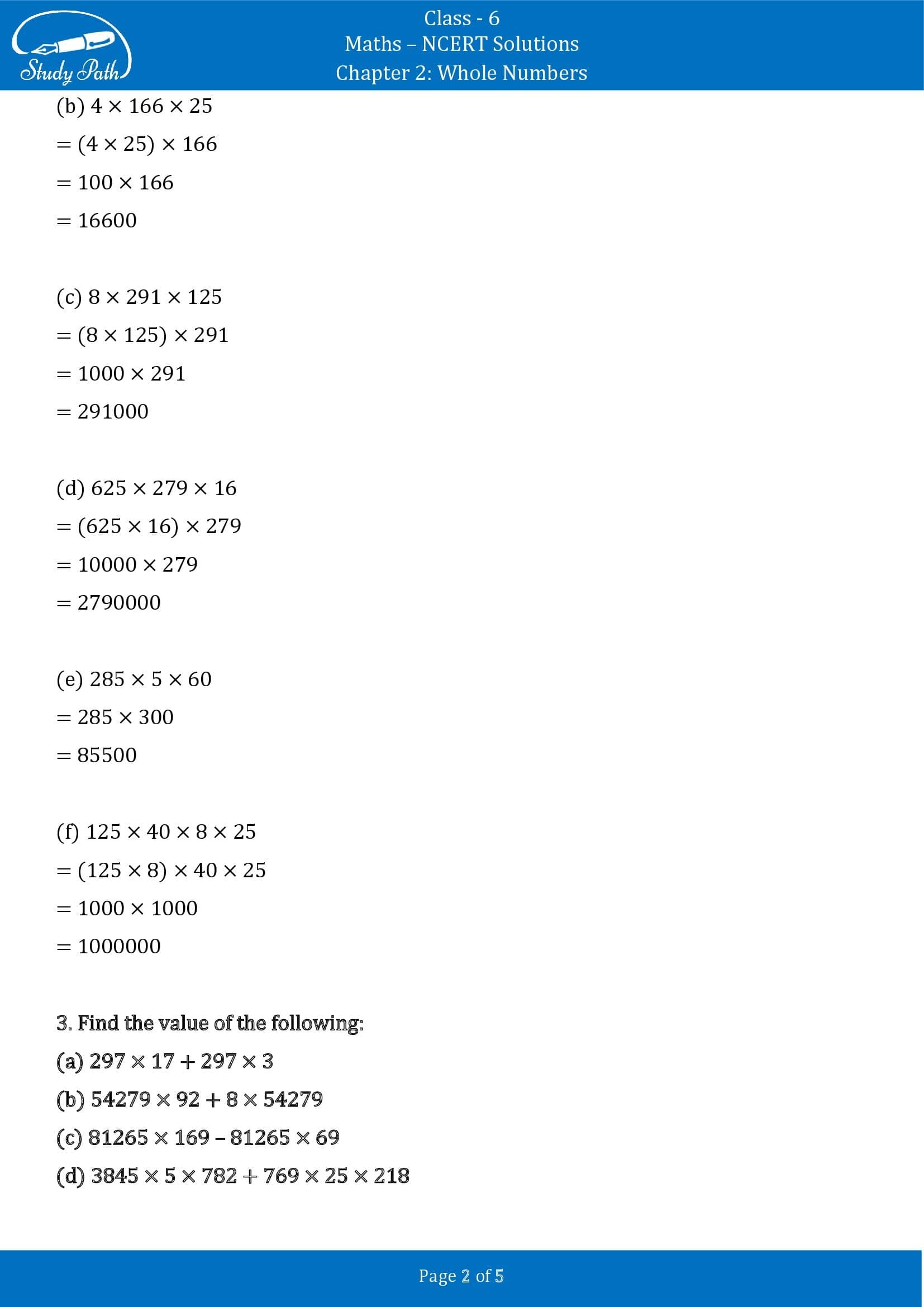
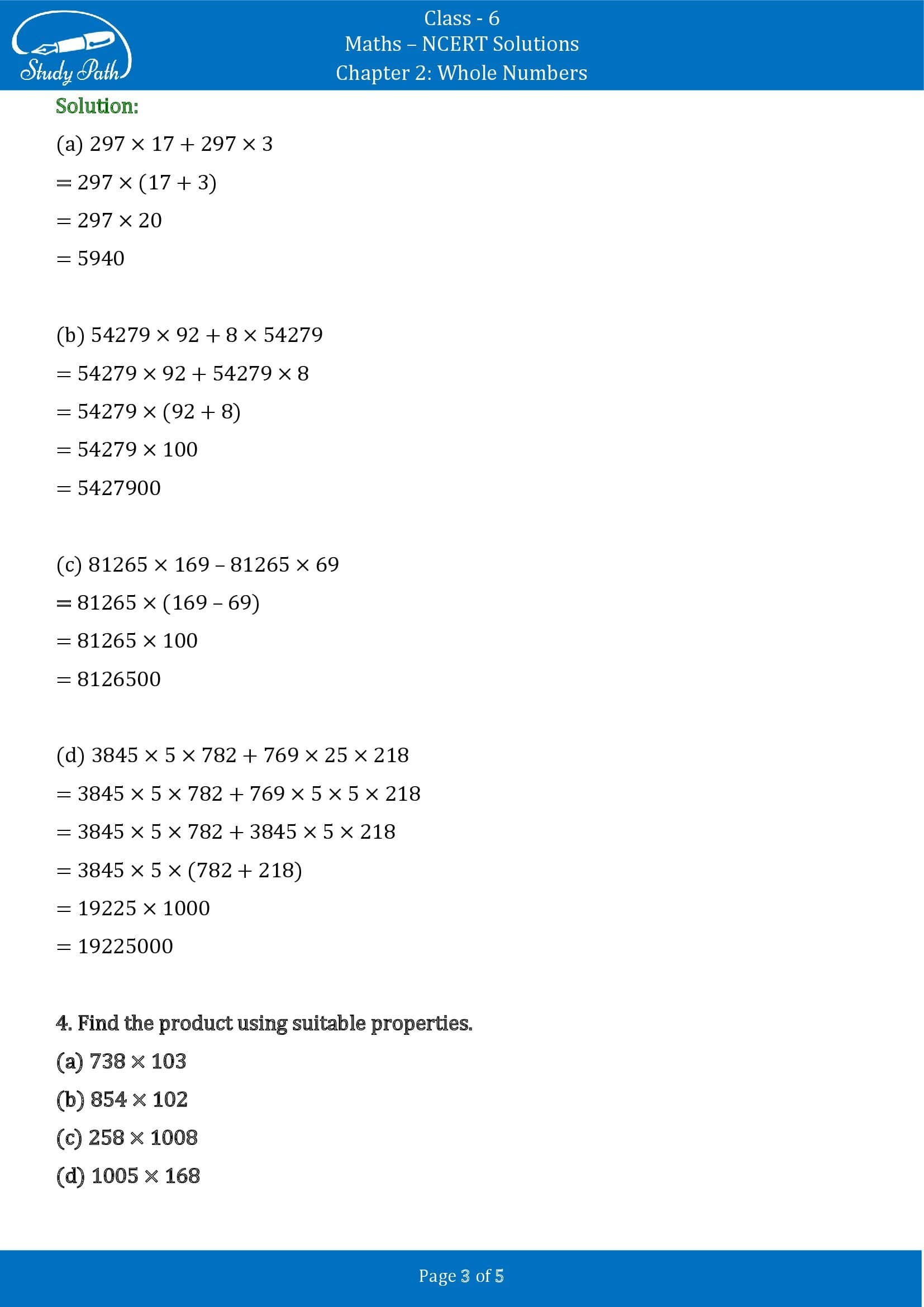
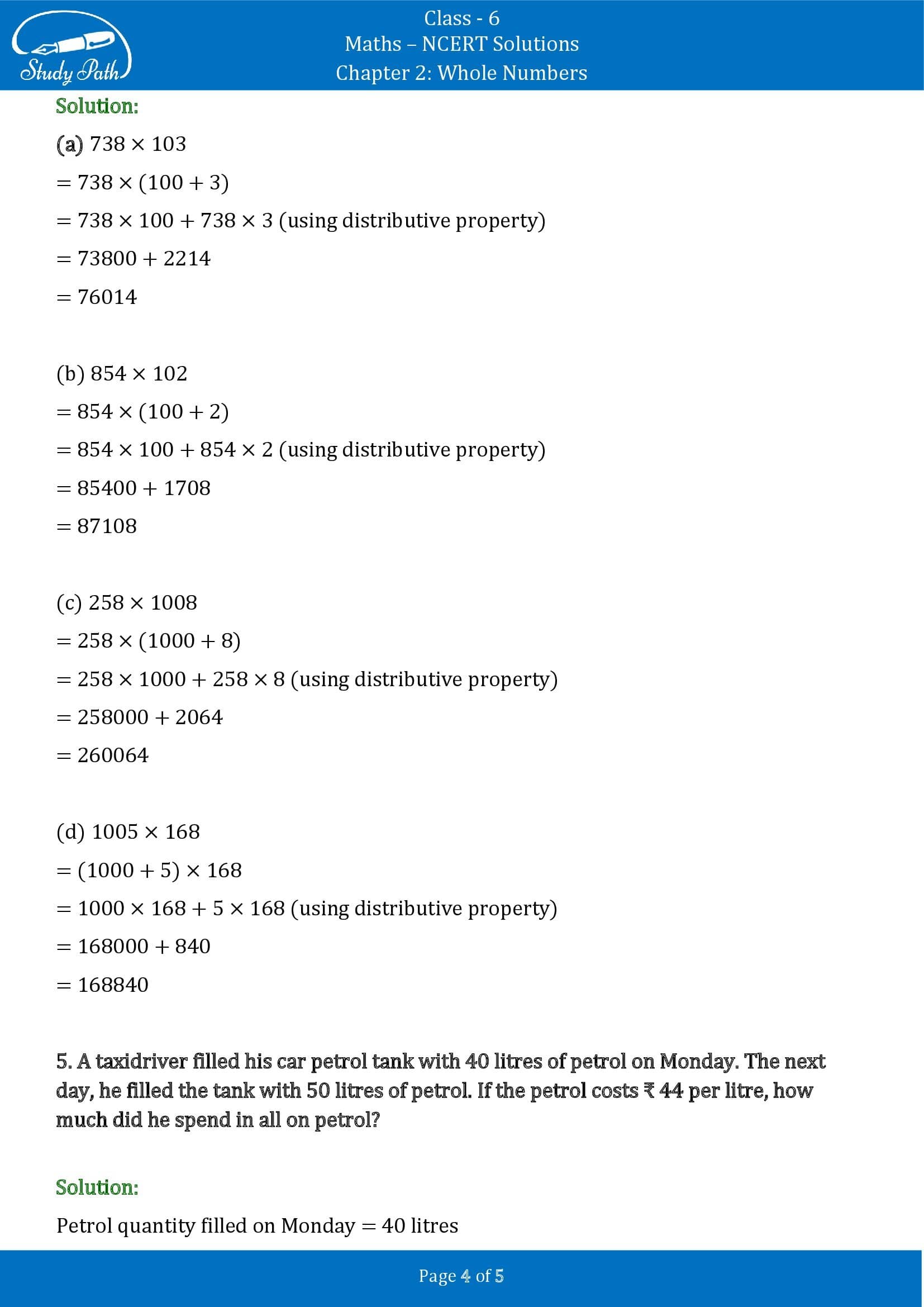
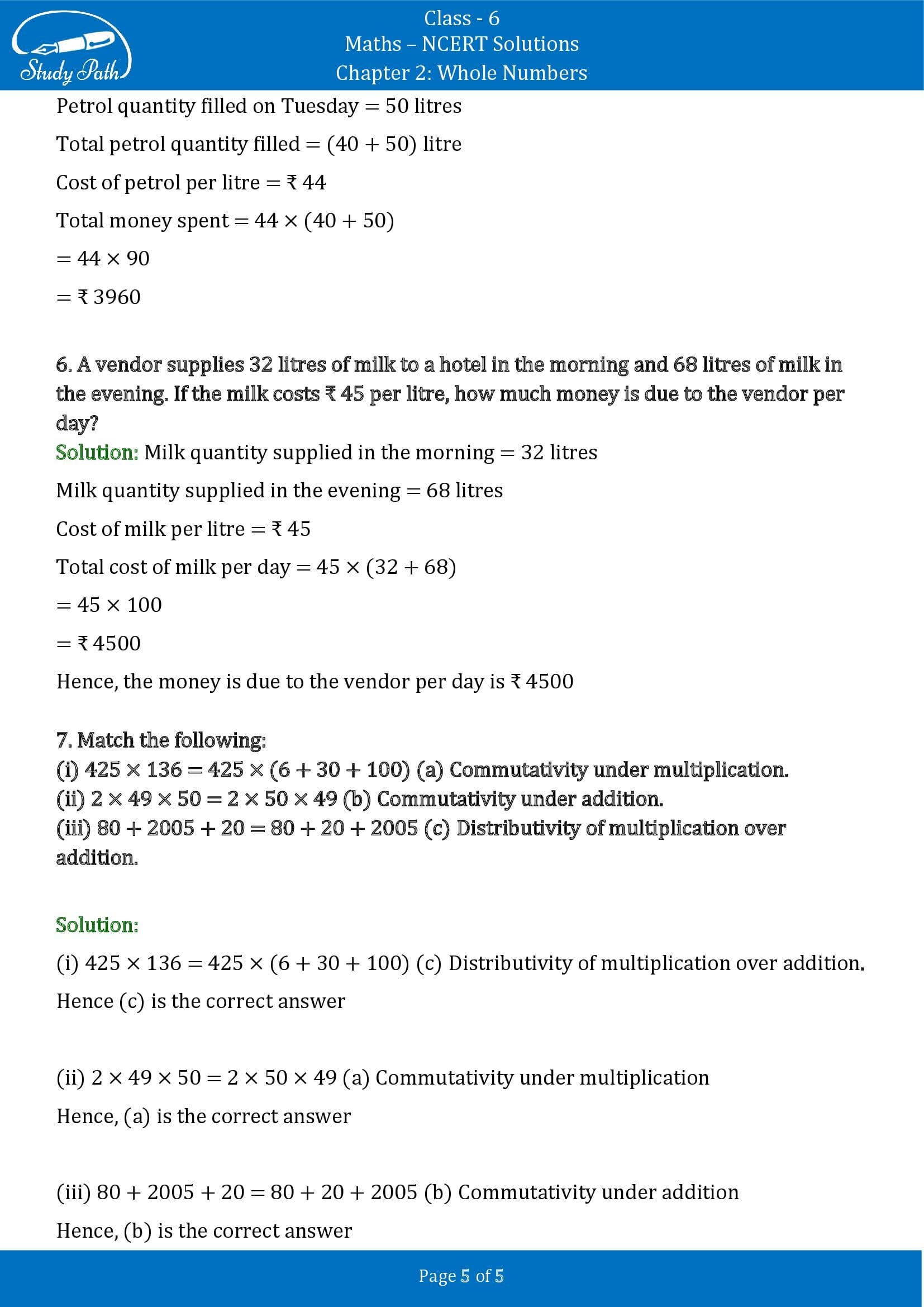
Exercise 2.2
1. Find the sum by suitable rearrangement:
(a) 837 + 208 + 363
(b) 1962 + 453 + 1538 + 647
Solutions:
(a) 837 + 208 + 363
= (837 + 363) + 208
= 1200 + 208
= 1408
(b) 1962 + 453 + 1538 + 647
= (1962 + 1538) + (453 + 647)
= 3500 + 1100
= 4600
2. Find the product by suitable rearrangement:
(a) 2 × 1768 × 50
(b) 4 × 166 × 25
(c) 8 × 291 × 125
(d) 625 × 279 × 16
(e) 285 × 5 × 60
(f) 125 × 40 × 8 × 25
Solutions: (a) 2 × 1768 × 50
= (2 × 50) × 1768
= 100 × 1768
= 176800
(b) 4 × 166 × 25
= (4 × 25) × 166
= 100 × 166
= 16600
(c) 8 × 291 × 125
= (8 × 125) × 291
= 1000 × 291
= 291000
(d) 625 × 279 × 16
= (625 × 16) × 279
= 10000 × 279
= 2790000
(e) 285 × 5 × 60
= 285 × 300
= 85500
(f) 125 × 40 × 8 × 25
= (125 × 8) × 40 × 25
= 1000 × 1000
= 1000000
3. Find the value of the following:
(a) 297 × 17 + 297 × 3
(b) 54279 × 92 + 8 × 54279
(c) 81265 × 169 – 81265 × 69
(d) 3845 × 5 × 782 + 769 × 25 × 218
Solutions:
(a) 297 × 17 + 297 × 3
= 297 × (17 + 3)
= 297 × 20
= 5940
(b) 54279 × 92 + 8 × 54279
= 54279 × 92 + 54279 × 8
= 54279 × (92 + 8)
= 54279 × 100
= 5427900
(c) 81265 × 169 – 81265 × 69
= 81265 × (169 – 69)
= 81265 × 100
= 8126500
(d) 3845 × 5 × 782 + 769 × 25 × 218
= 3845 × 5 × 782 + 769 × 5 × 5 × 218
= 3845 × 5 × 782 + 3845 × 5 × 218
= 3845 × 5 × (782 + 218)
= 19225 × 1000
= 19225000
4. Find the product using suitable properties.(a) 738 × 103
(b) 854 × 102
(c) 258 × 1008
(d) 1005 × 168
Solutions:
(a) 738 × 103
= 738 × (100 + 3)
= 738 × 100 + 738 × 3 (using distributive property)
= 73800 + 2214
= 76014
(b) 854 × 102
= 854 × (100 + 2)
= 854 × 100 + 854 × 2 (using distributive property)
= 85400 + 1708
= 87108
(c) 258 × 1008
= 258 × (1000 + 8)
= 258 × 1000 + 258 × 8 (using distributive property)
= 258000 + 2064
= 260064
(d) 1005 × 168
= (1000 + 5) × 168
= 1000 × 168 + 5 × 168 (using distributive property)
= 168000 + 840
= 168840
5. A taxidriver filled his car petrol tank with 40 litres of petrol on Monday. The next day, he filled the tank with 50 litres of petrol. If the petrol costs ₹ 44 per litre, how much did he spend in all on petrol?
Solutions:
Petrol quantity filled on Monday = 40 litres
Petrol quantity filled on Tuesday = 50 litres
Total petrol quantity filled = (40 + 50) litre
Cost of petrol per litre = ₹ 44
Therefore, Total money spent = 44 × (40 + 50)
= 44 × 90
= ₹ 3960
6. A vendor supplies 32 litres of milk to a hotel in the morning and 68 litres of milk in the evening. If the milk costs ₹ 45 per litre, how much money is due to the vendor per day?
Solutions:
Milk quantity supplied in the morning = 32 litres
Milk quantity supplied in the evening = 68 litres
Cost of milk per litre = ₹ 45
Total cost of milk per day = 45 × (32 + 68)
= 45 × 100
= ₹ 4500
Hence, the money is due to the vendor per day is ₹ 4500
7. Match the following:
(i) 425 × 136 = 425 × (6 + 30 + 100) (a) Commutativity under multiplication.
(ii) 2 × 49 × 50 = 2 × 50 × 49 (b) Commutativity under addition.
(iii) 80 + 2005 + 20 = 80 + 20 + 2005 (c) Distributivity of multiplication over addition.
Solutions: (i) 425 × 136 = 425 × (6 + 30 + 100) (c) Distributivity of multiplication over addition.
Hence (c) is the correct answer
(ii) 2 × 49 × 50 = 2 × 50 × 49 (a) Commutativity under multiplication
Hence, (a) is the correct answer
(iii) 80 + 2005 + 20 = 80 + 20 + 2005 (b) Commutativity under addition
Hence, (b) is the correct answer
Access NCERT Solutions for Class 6 Maths Chapter 2 Whole Numbers – All Exercises
Below we have provided the links to check solutions of the other exercises of the chapter.